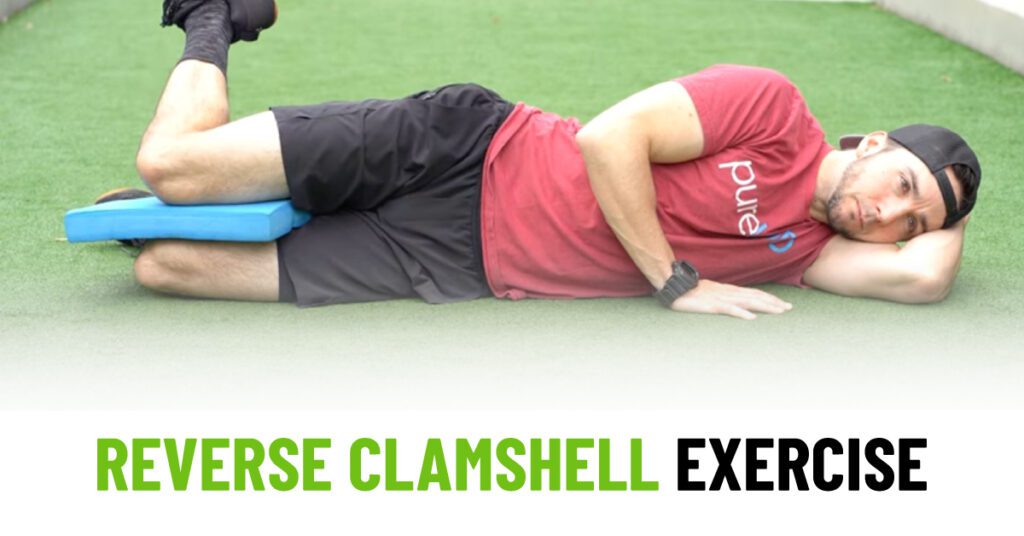Best Exercise for Peripheral Artery Disease

Also available in
The impact of peripheral artery disease (PAD) extends beyond physical discomfort, influencing everyday activities and diminishing quality of life. However, amidst these challenges, there lies a beacon of hope: exercise. Engaging in the best exercise for peripheral artery disease offers a means to alleviate symptoms and enhance overall health.
The critical role of exercise in PAD management is rooted in its ability to stimulate blood flow, encouraging the development of collateral blood vessels that circumvent the blockages. This increased blood flow improves oxygen delivery to muscles, reducing discomfort during physical activities and enhancing endurance.
This comprehensive guide aims to illuminate the significance of exercise, exploring the best exercise for peripheral artery disease, considerations, and lifestyle modifications that cater specifically to individuals navigating life with PAD.
You can also check here for the best sleeping position for peripheral artery disease (PAD).
Importance of Exercise for Peripheral Artery Disease
Enhanced Blood Circulation:
Engaging in regular exercise promotes increased blood circulation, a pivotal factor in PAD management. As exercise intensifies, the body’s demand for oxygen-rich blood surges, prompting blood vessels to expand and accommodate this increased flow.
Over time this process aids in the development of collateral blood vessels, circumventing blockages, and enhancing blood supply to the affected limbs.
Improved circulation not only diminishes discomfort during movement but also fosters better tissue repair and overall muscle function.
Improved Cardiovascular Health:
PAD is often associated with an increased risk of cardiovascular complications, including heart disease and stroke. Exercise serves as a powerful ally in combating these risks. It helps regulate blood pressure, lowers cholesterol levels, and strengthens the heart muscle.
By reducing these risk factors, exercise plays a crucial role in not only managing PAD but also in averting more severe cardiovascular issues.
Alleviation of Symptoms:
The discomfort and pain experienced by individuals with PAD during physical activity can significantly hinder their quality of life. However, regular exercise, when tailored to individual capabilities, can alleviate these symptoms.
Exercise helps the body adapt to increased demands, gradually improving endurance and reducing discomfort during movement, thereby enabling individuals to engage in daily activities with more ease and comfort.
Complementary to Medical Treatments:
While medical treatments like medications and surgeries remain essential components of PAD management, exercise complements these interventions.
It enhances their effectiveness by improving blood flow, ensuring better oxygen delivery, and maximizing the overall benefits of medical therapies.
Factors to Consider Before Exercising
- Medical Consultation: Consult a healthcare professional experienced in PAD management for personalized advice and exercise recommendations.
- Individual Limitations: Understand your personal limitations, symptoms, and pain thresholds to tailor exercises to your capabilities.
- Gradual Progression: Begin with gentle exercises and gradually increase intensity to avoid overexertion or injury.
- Safety Precautions: Use proper footwear, choose low-impact activities, and be mindful of any worsening symptoms during exercise.
- Monitoring and Adaptation: Regularly monitor how your body responds to exercise and adjust routines accordingly.
- Consistency and Patience: Stay committed to a consistent exercise plan and be patient for gradual improvements over time.
Best Exercise for Peripheral Artery Disease
Walking
Walking stands as a cornerstone exercise for PAD management. Initiate with short, comfortable walks and gradually extend duration as tolerance increases.
Regular walking enhances blood flow, stimulates the development of collateral blood vessels, and strengthens leg muscles. Embrace a brisk yet comfortable pace, gradually building endurance without overexertion.
Cycling
Cycling, whether on stationary bikes or outdoors, offers a low-impact yet effective exercise option. It engages leg muscles without exerting excessive pressure on joints. Begin with short sessions and gradually extend duration and intensity. Adjust the bike’s resistance to suit individual comfort levels.
Water Aerobics
Water aerobics present the best exercise for peripheral artery disease due to their low-impact nature. The water’s buoyancy reduces strain on joints while providing resistance for muscle engagement.
These exercises promote cardiovascular fitness and are particularly suitable for individuals with mobility constraints.
Here is an example of a water aerobics exercise:
- Leg Lifts in Water
- Water Walking or Marching
- Pool Cycling
Strength Exercise
Incorporating light strength training into the routine aids in enhancing overall muscle function. Focus on exercises targeting the legs, arms, and core muscles. Start with lighter weights and progress gradually to avoid strain while improving muscle strength and endurance.
Here are examples of suitable exercises:
- Leg Press
- Calf Raises
- Chair Squats
Yoga and Stretching Exercise for PAD
Gentle yoga poses and stretching exercises improve flexibility, promote blood circulation, and alleviate muscle tension. These activities complement other exercises, aiding in relaxation and enhancing overall mobility.
Here are examples of yoga poses and stretching exercises for PAD:
- Seated Forward Bend (Paschimottanasana)
- Child’s Pose (Balasana)
- Hamstring Stretch
- Quad Stretch
Read more: 10-Minute Yoga Stretch for Daily Wellness
Swimming
Swimming provides a full-body workout with minimal impact on the limbs. It engages various muscle groups, fostering cardiovascular fitness without exerting stress on joints. The water’s resistance aids in building strength while enhancing blood circulation.
Lifestyle Modifications Alongside Exercise
In addition to incorporating the best exercise for peripheral artery disease into a routine, certain lifestyle adjustments complement PAD management, enhancing overall vascular health and well-being.
Healthy Diet
Embracing a balanced and nutritious diet plays a pivotal role in managing PAD. choose a diet rich in fruits, vegetables, whole grains, and lean proteins. Limit saturated fats, trans fats, and sodium intake to promote heart health and manage cholesterol levels.
Smoking Cessation
Smoking exacerbates PAD symptoms and increases the risk of cardiovascular complications. Quitting smoking significantly improves blood circulation and reduces the progression of arterial blockages.
Weight Management
Maintaining a healthy weight reduces stress on the cardiovascular system. Combined with exercise, managing weight aids in improving blood flow and reduces the burden on affected limbs.
Stress Management
Chronic stress can impact vascular health. Engage in relaxation techniques such as meditation, deep breathing exercises, or yoga to alleviate stress and promote overall well-being.
Medication Adherence
Ensure strict adherence to prescribed medications. Medications like blood thinners, cholesterol-lowering drugs, and antiplatelet agents aid in managing PAD symptoms and preventing complications.
Regular Health Check-ups
Scheduled visits to healthcare professionals are crucial for monitoring PAD progression, adjusting treatments, and assessing overall health. Regular check-ups help in the early detection of potential issues, enabling timely intervention.
Foot Care
Individuals with PAD are prone to foot complications due to reduced blood flow. Practice good foot care by regularly inspecting feet for sores, cuts, or any signs of infection. Proper foot hygiene and appropriate footwear help prevent complications.
Temperature Management:
Extreme temperatures can affect blood flow. Dress appropriately for weather conditions to prevent constriction of blood vessels.
Conclusion
Exercise stands as a cornerstone in PAD management, offering multifaceted benefits that transcend symptom alleviation. By engaging in the best exercise for peripheral artery disease like walking, cycling, water aerobics, strength training, and swimming, individuals can improve blood circulation, enhance muscle strength, and minimize discomfort during physical activities.
Consulting healthcare professionals for guidance in crafting personalized exercise plans ensures safety and efficacy. Regular monitoring of symptoms and adjustments to exercise routines enable individuals to adapt and optimize their workouts for maximum benefits.
Comment below to share your thoughts on the best exercise for Peripheral Artery Disease. Share this valuable information with those who might benefit from it.
You May Also Like To Read…
- Best Exercise for Leaky Heart Valve
- Wall Pilates Workouts for Strength and Flexibility
- Free 28-Day Wall Pilates Challenge for a Toned and Lean Body
Article references
- https://www.nhlbi.nih.gov/health/peripheral-artery-disease/living-with
- https://www.cardio.com/blog/best-exercise-for-peripheral-arterial-disease
- https://www.primehv.com/blog/tips-for-exercising-with-peripheral-artery-disease
- https://ayu.health/blog/best-exercises-for-peripheral-artery-disease/
- https://www.stylecraze.com/articles/best-exercise-for-peripheral-artery-disease/
- https://health.clevelandclinic.org/exercising-with-peripheral-artery-disease-take-steps-to-reduce-leg-pain






